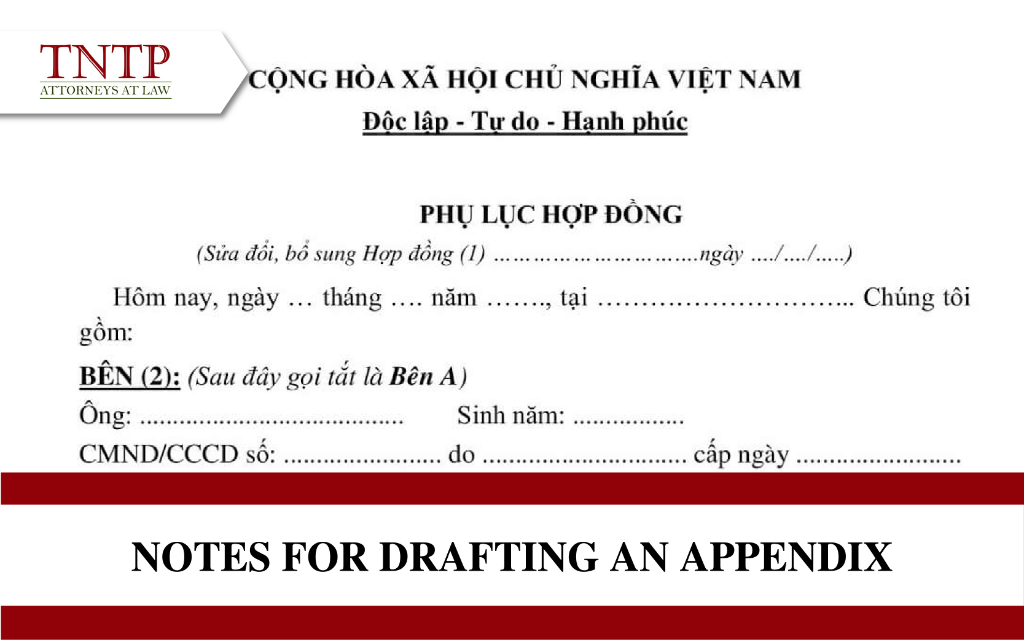During the performance of the Contract, new problems may arise or the parties need to explain and specify the terms of the contract in detail, which will cause the parties to amend, supplement or change some contents in the signed contract. The parties often sign an Appendix to solve this above problem. What content should the parties pay attention to when signing the Appendix? Let’s clarify with TNTP the topic: Notes for drafting an appendix.
1. What is an Appendix?
Under Article 403 of Civil Code 2015 “Appendices providing details on certain terms and conditions of a contract may be attached to the contract. The appendices shall have the same effectiveness as the contract. The contents of the appendices shall not contradict the contents of the contract.”
The terms and conditions of the appendices contradict those of the contract, such terms and conditions of the appendices shall be ineffective unless otherwise agreed by the parties. If the parties agree on the appendix with the contrary provision, it shall be deemed that such provision in the original contract has been amended.
- Distinguish between an Appendix and an ancillary contract:
- Firstly, in nature: The appendix is a part of the contract, established to clarify some terms in the contract. An ancillary contract is an independent contract, separate from the principal contract. However, the validity of the ancillary contract will depend on the principal contract, which may be terminated because of the invalidity of a principal contract.
- Secondly, regarding the content: The appendix is established to explain one or several terms of the contract, so its content must not be contrary to the contract’s content unless otherwise agreed. The ancillary contract’s content contains the contract’s content as stipulated in Article 398 of the Civil Code 2015.
- Thirdly, based on arising: The Appendix arises from one or several clauses in the Contract. The ancillary contract arises from the Principal contract.
2. Notes for drafting an Appendix
- Regarding the form: Form is considered the effective condition of the contract in case it is regulated by law. Since the Appendix is considered a part of the contract, it must comply with the formal requirements of the contract stipulated by law, for example, to be in writing, to contain notarization, and authentication, … Therefore, before signing the Appendix, the parties should comply with the regulations on the form of the contract to avoid violation and the invalidity of the Appendix.
- Regarding the content: The content of the Appendix depends on the contract, so when establishing the Appendix, it is necessary to base it on the content of the original contract. The contents of the Appendix must be consistent and not be contrary to the contents of the contract. If the terms of the Appendix are contrary to the contents of the contract, this provision shall not be effective. However, if the parties accept the content of the Appendix containing a clause contrary to the content of the Contract, that provision shall be considered as amended in the contract. To prove that the parties accept a clause that is contrary to the contract, the parties should draft this content in the contract or the Appendix, for example, “In case the appendix contains conflicting content, contrary to the contract, the parties shall prioritize the application of the content specified in the Appendix.”
In addition, when signing the Appendix, the parties need to comply with the valid conditions of civil transactions specified in Article 117 of Civil Code 2015.
3. Effectiveness of the Appendix
The Appendix has the same effect as the contract. Accordingly, when the Contract is terminated or invalidated, the Appendix will also terminate or be invalidated.
Above is the article “Notes for drafting an Appendix”. We hope this article was useful to you.
Best regards,








